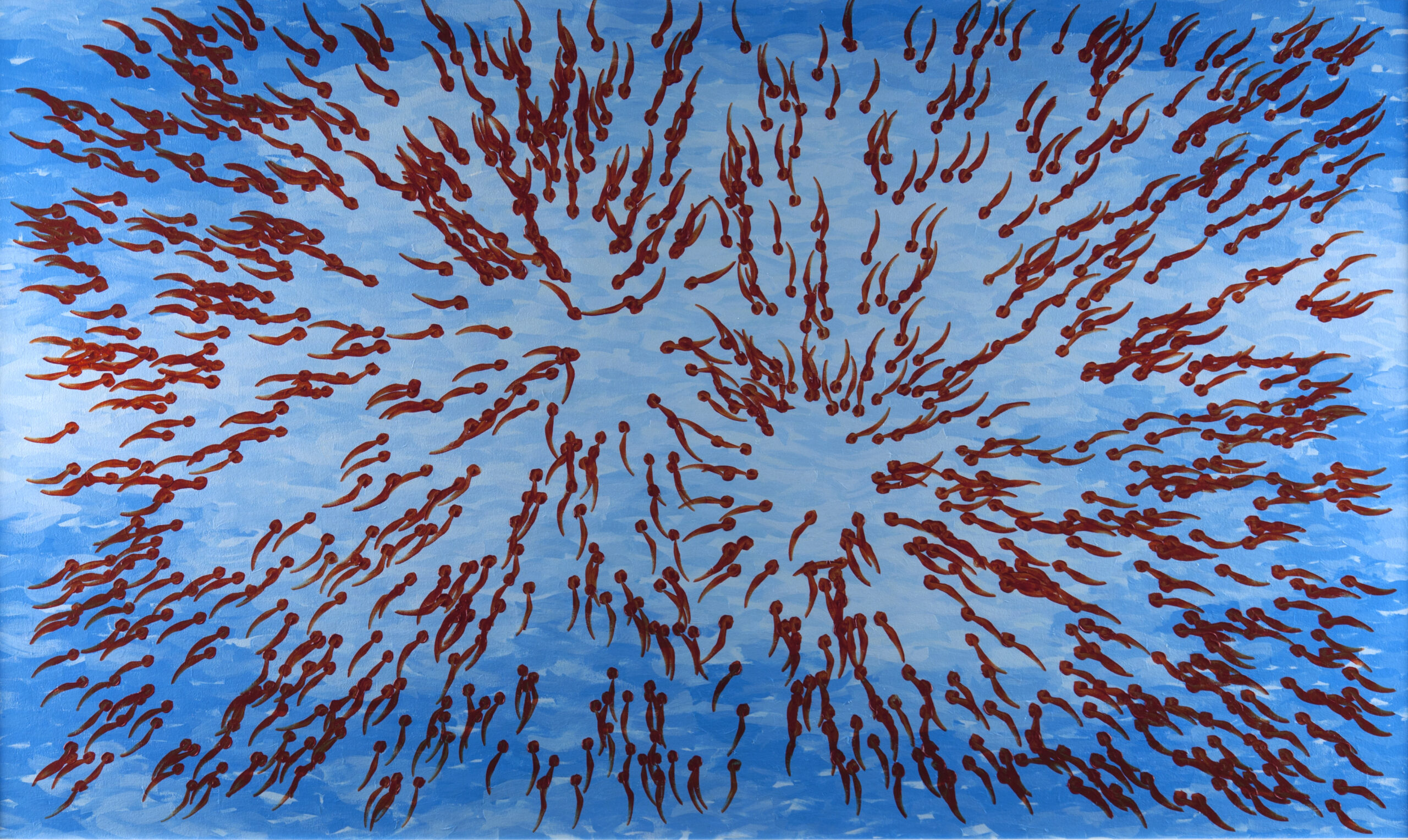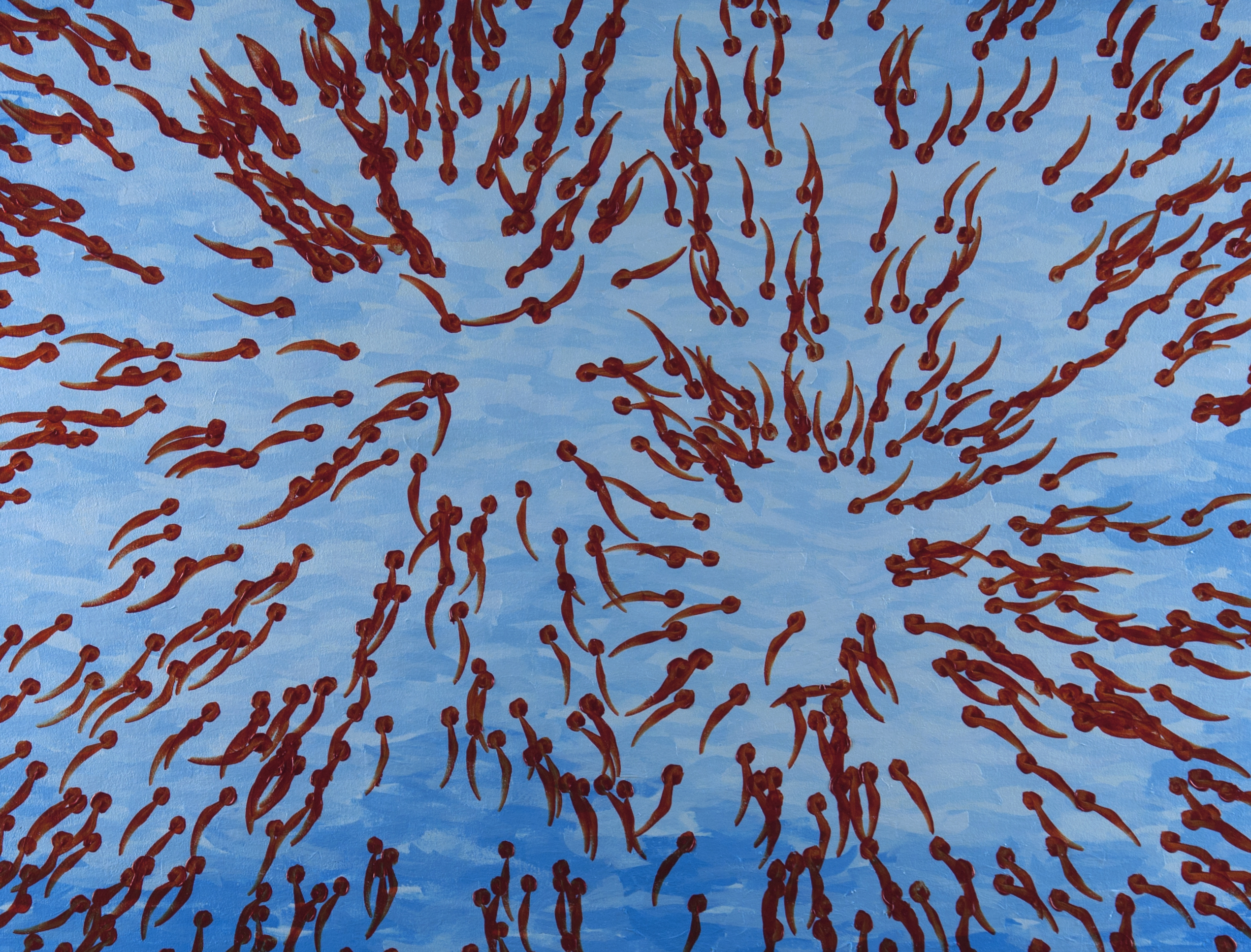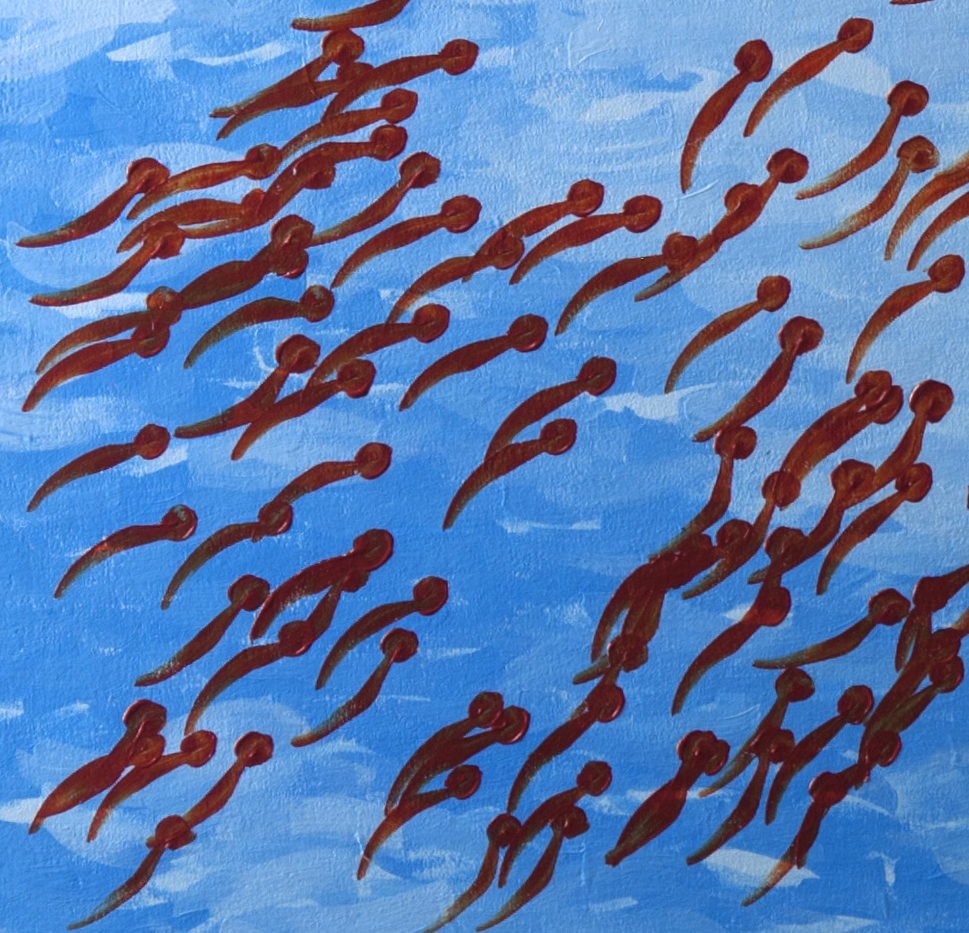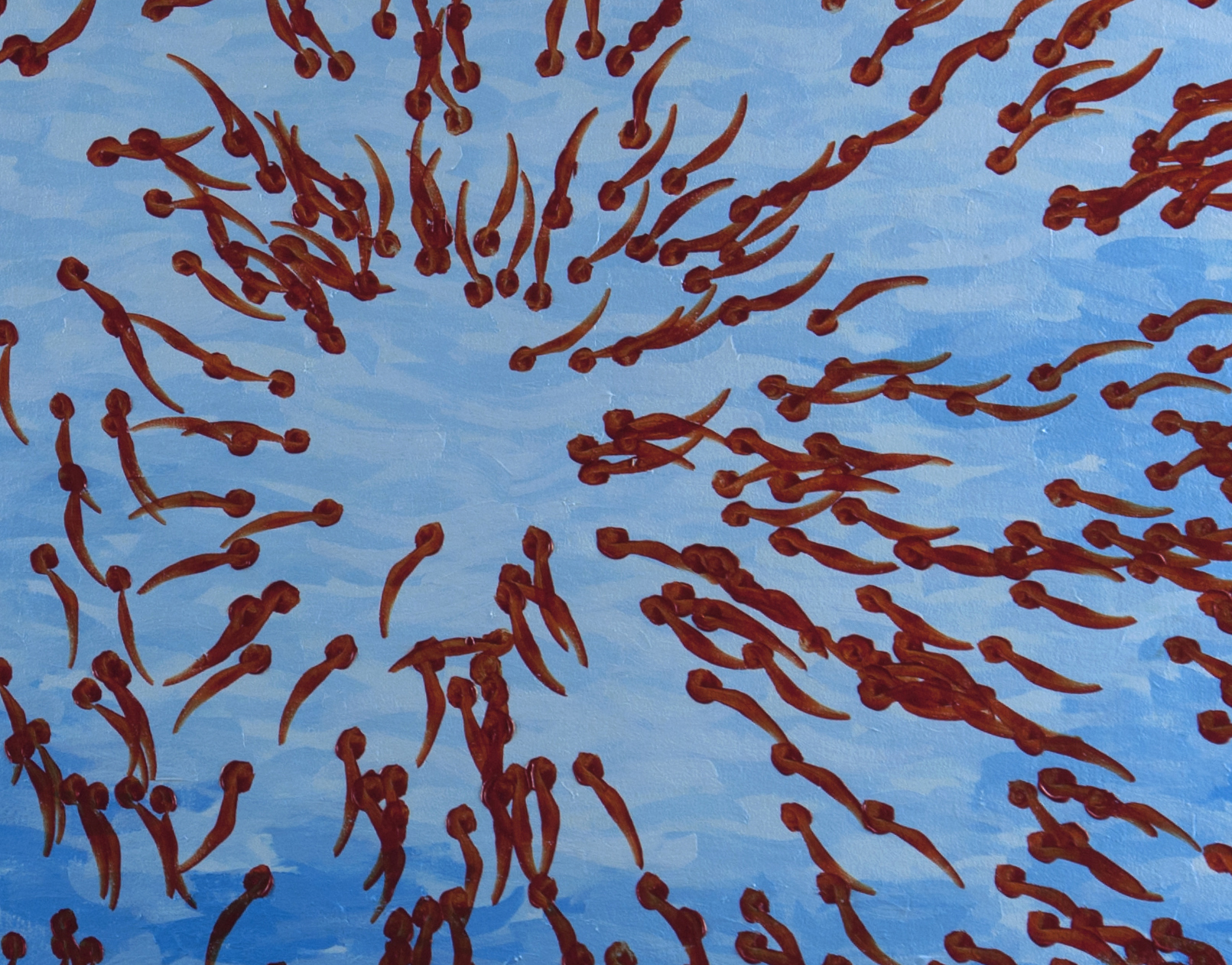Tadpoles
2005
48” x 78”
Brushstrokes: 996

View in Gallery
A fascinating interplay of hubs, centric energy, and swarming behavior define this painting’s nearly 1000 swarming tadpoles and hypnotizing patterns. Dulcinea the robot painter’s deft wrist creates urgency and life with every brushstroke.

AI Techniques & Swarming Theory
The tadpoles seen here were created using swarming behavior theory and AI swarming intelligence algorithms, producing 993 tadpoles caught in vectors of directional energy. The tadpoles’ objective was to swarm toward two positively-charged destinations, with Dulcinea painting the results of the simulated tadpole swarm.
To achieve the uneven distribution within the overall movement of the tadpoles, thirty-eight invisible spheres of differing sizes were dropped into the simulated space. Each sphere represented areas of repulsion, creating places the tadpoles needed to swim around on their swarming journey. This produced the different radial gaps visible in the finished painting, and leant to the piece a greater sense of variety, movement, and visual depth.

Dulcinea’s New Brushwork Abilities
Since no two tadpoles in nature are the same, Paul wanted Dulcinea’s marine life painting to carry the same level of complexity. This meant new and complex brushstroke abilities needed to be programmed for Dulcinea to work with. The robot wrist performed a series of intricate movements to capture the figure of each tadpole in a single stroke. These strokes were designed to be ever-so-slightly different in order to create a sense of unique character for each tadpole, giving the swarm a feeling of true-to-life variety. Paul considers each tadpole to represent an important note of directional, visual energy. The complementary colors of orange and blue in the painting compound this energy and make for a vibrant work that catches the eye all the way from the opposite side of a room.

Background Balayé
To create the painting’s background, the “pond” in which the tadpoles make their journey, Paul and Dulcinea employed the “balayé” method, pioneered by the renowned French post-Impressionist painter Georges Pierre Seurat. This technique entails using a flat brush to apply strokes in a crosshatch pattern, adding visual dimension and a delicate dynamism to enhance the painting’s setting, harmoniously enriching the scene without diverting attention from the lively motion of the brushstroke amphibians.